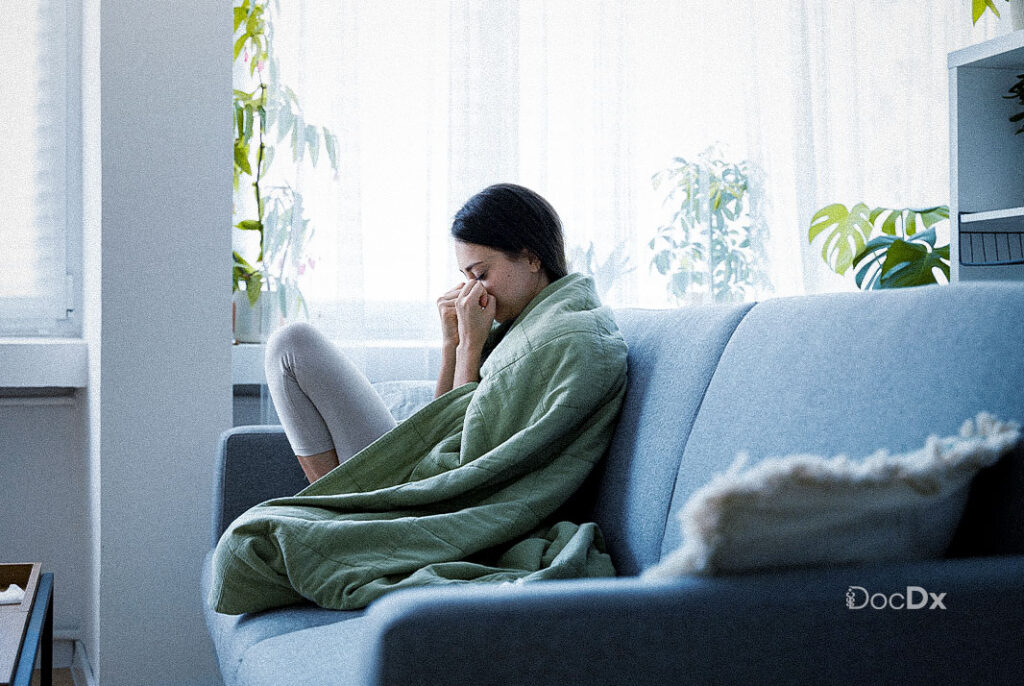Seasonal Affective Disorder (SAD) is more than just the “winter blues.” It’s a type of depression that occurs at specific times of the year, typically during the fall and winter months. While the colder seasons can bring feelings of sadness or low energy for some, those with SAD experience more severe symptoms that can affect their daily lives. In this blog, we’ll explore what SAD is, how to recognize its symptoms, and practical steps for managing it.
What Is Seasonal Affective Disorder (SAD)?
SAD is a subtype of depression that is triggered by seasonal changes, particularly during the fall and winter months when daylight hours are shorter. It’s estimated that millions of people experience SAD every year, with the symptoms often appearing gradually as the days become shorter.
Symptoms of Seasonal Affective Disorder
The symptoms of SAD can be similar to those of general depression but are tied to seasonal changes. Some common signs of SAD include:
- Persistent feelings of sadness or hopelessness
- Loss of interest in activities once enjoyed
- Low energy and fatigue
- Difficulty concentrating
- Changes in sleep patterns, including oversleeping
- Increased cravings for carbohydrates or weight gain
- Feelings of irritability or agitation
If these symptoms sound familiar and you notice them returning each year, especially as the seasons change, it could be worth discussing them with a healthcare professional.
Why Does SAD Occur?
While the exact cause of SAD isn’t fully understood, it’s believed to be linked to reduced exposure to sunlight. Less sunlight can lead to a drop in serotonin levels, a chemical in the brain that affects mood. Additionally, the change in seasons can disrupt your body’s biological clock, or circadian rhythm, leading to feelings of depression. For many, the darker days of winter lead to less energy and motivation, contributing to the development of SAD.
Managing Seasonal Affective Disorder
The good news is that there are effective ways to manage SAD. Here are some practical strategies that can help:
1. Light Therapy
One of the most common treatments for SAD is light therapy, also known as phototherapy. This involves sitting near a special light box that mimics natural sunlight for about 30 minutes each day. Light therapy can help to regulate your body’s internal clock and improve mood by increasing serotonin levels.
2. Talk to Your Healthcare Provider About Medication
In some cases, medication such as antidepressants may be recommended, especially if your symptoms are more severe. Medications that target serotonin, such as selective serotonin reuptake inhibitors (SSRIs), can help regulate mood. If you are considering this option, it’s important to talk to your primary care provider. They can help you decide the best course of treatment and monitor your progress.
3. Psychotherapy (Cognitive Behavioral Therapy)
Cognitive Behavioral Therapy (CBT) is another effective treatment for seasonal depression. This type of therapy helps you identify negative thought patterns and develop healthier ways of thinking and coping with the symptoms of SAD. Working with a mental health professional can provide you with personalized strategies to manage your feelings and boost your mood.
4. Get Outside and Exercise
Even though it’s cold outside, spending time outdoors can be beneficial. Natural sunlight, even on a cloudy day, can help improve your mood and increase vitamin D levels, which are often lower in the winter months. Regular physical activity can also release endorphins, which naturally boost your mood.
5. Maintain a Regular Routine
SAD can often make you feel sluggish and unmotivated, which can disrupt your daily routines. Try to keep a regular schedule, including consistent sleep and meal times. A structured routine can help you maintain a sense of normalcy and control over your day.
6. Consider Vitamin D Supplements
Since shorter daylight hours reduce your exposure to sunlight, which is a natural source of vitamin D, many people with SAD experience low vitamin D levels. Taking a vitamin D supplement may help improve mood, but always consult with your healthcare provider before starting any new supplements.
How to Know If You Have SAD or General Depression
It can sometimes be difficult to differentiate between seasonal depression and general depression, as many of the symptoms overlap. The key difference is that SAD symptoms typically follow a seasonal pattern, meaning they worsen during certain months and improve as the seasons change. If you experience depression symptoms year-round, it may not be linked to the seasons. Either way, it’s crucial to speak to your healthcare provider for a proper diagnosis.
If you’re not sure whether you’re experiencing SAD or another form of depression, your primary care provider can conduct an evaluation. They may refer you to a mental health specialist if needed.
When to Seek Help
If you’ve tried self-care strategies but continue to feel persistently sad or unmotivated, it may be time to reach out for professional help. Untreated SAD can lead to more severe depression, anxiety, or other mental health issues. Speaking with your primary care provider or a mental health professional can provide the support and treatment you need to start feeling better.
Preventing SAD in the Future
While you may not be able to completely prevent SAD, you can take proactive steps each year to manage it before symptoms become overwhelming. Starting light therapy early, maintaining a healthy diet, staying active, and spending time outside, even during the colder months, can help reduce the impact of seasonal depression.
The Role of Primary Care Providers in Managing SAD
Your primary care provider plays an essential role in identifying and managing SAD. They can help you determine whether your symptoms are seasonal and guide you through treatment options, whether that’s light therapy, medication, or counseling. Additionally, they can monitor your overall health and ensure that any co-existing conditions, such as anxiety or general depression, are addressed.
Conclusion
Seasonal Affective Disorder is a serious condition that can significantly impact your quality of life during certain times of the year. Understanding the symptoms and causes of SAD, and taking proactive steps to manage it, can make all the difference in how you feel throughout the winter months. Remember, if you’re struggling with symptoms, don’t hesitate to seek help from your healthcare provider. Effective treatments, such as light therapy, medication, and psychotherapy, can help you regain control and improve your well-being.




